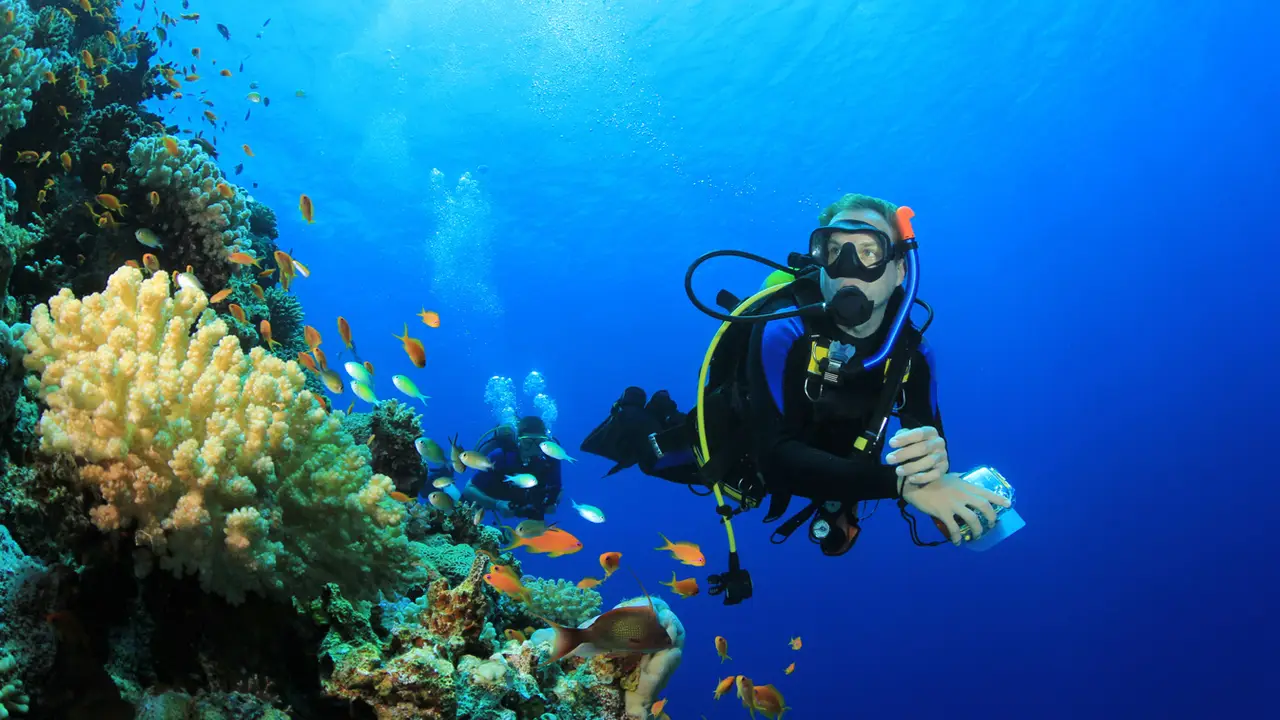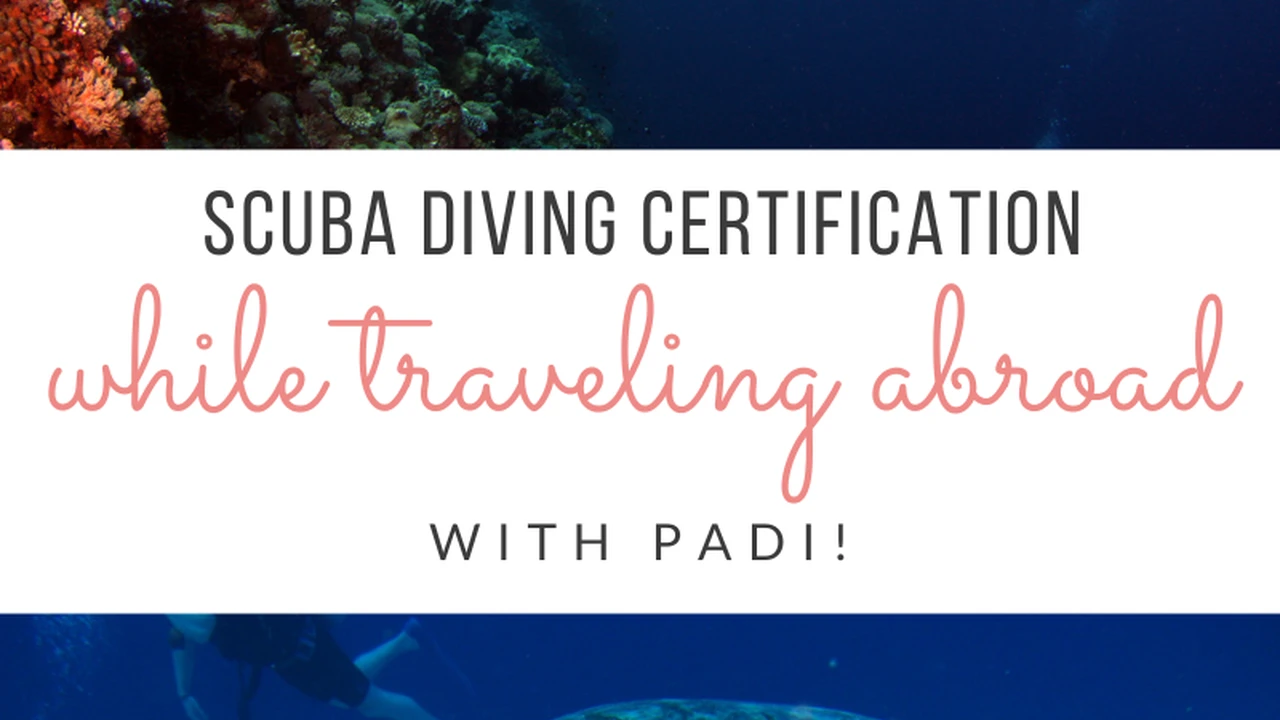Best Scuba Diving Boots for Fin Comfort and Protection
Review of comfortable and protective dive boots suitable for open-heel fins and shore entries.

Best Scuba Diving Boots for Fin Comfort and Protection
Review of comfortable and protective dive boots suitable for open-heel fins and shore entries.Why Scuba Diving Boots Are Essential for Divers
Alright, let's talk about scuba diving boots. You might think, 'Do I really need another piece of gear?' And the answer, my friend, is a resounding yes! Dive boots aren't just some optional accessory; they're a crucial part of your diving setup, especially if you're using open-heel fins. Think about it: you're walking over rocky shorelines, navigating boat decks, or even just trying to get comfortable in your fins. Without proper dive boots, you're looking at blisters, scrapes, and a whole lot of discomfort. They provide that much-needed protection and comfort, making your pre-dive, during-dive, and post-dive experience much more enjoyable. Plus, they add a layer of thermal insulation, which is a huge bonus in cooler waters. So, let's dive deep into why these seemingly simple items are so important and how to pick the best ones for your underwater adventures.
Understanding Different Types of Scuba Diving Boots
When you start looking at dive boots, you'll quickly realize there's more than one type out there. It's not a one-size-fits-all situation, and what works for one diver might not be ideal for another. Generally, dive boots are categorized by their thickness (neoprene thickness, measured in millimeters) and their sole type. Let's break down the main types:
Low-Cut vs. High-Cut Dive Boots for Various Diving Conditions
- Low-Cut Boots: These typically come up to just above your ankle. They're great for warmer waters where you don't need a lot of thermal protection, or if you prefer a less restrictive feel. They're also often lighter and more flexible, making them good for travel. However, they offer less protection against scrapes and stings if you're walking through rough terrain.
- High-Cut Boots: These extend further up your calf, sometimes even past your ankle. They offer superior thermal insulation, making them ideal for colder water diving. The extra height also provides more protection against abrasions and marine life, which is a big plus if you're doing shore entries over sharp rocks or coral. They can feel a bit bulkier, but the added warmth and protection are often worth it.
Neoprene Thickness and Thermal Insulation for Scuba Diving Boots
The thickness of the neoprene is a critical factor, directly impacting the thermal insulation your boots provide. It's measured in millimeters (mm), and you'll typically find boots ranging from 3mm to 7mm.
- 3mm Dive Boots: Perfect for tropical and warm water diving. They offer minimal thermal protection but are lightweight and flexible. Great for quick boat dives where you don't need to walk far.
- 5mm Dive Boots: A versatile option that works well in temperate waters. They provide a good balance of warmth and flexibility, making them a popular choice for many divers.
- 7mm Dive Boots: Your go-to for cold water diving. These offer maximum thermal insulation, keeping your feet toasty even in chilly conditions. They are thicker and less flexible, but the warmth is invaluable.
Sole Types and Grip for Scuba Diving Boots
The sole of your dive boot is just as important as the neoprene thickness, especially for traction and protection.
- Standard Rubber Soles: Most common type, offering decent grip on wet surfaces. Good for general boat diving and light shore entries.
- Heavy-Duty or Treaded Soles: These have more aggressive treads, similar to hiking boots, providing excellent grip on slippery rocks, boat decks, and uneven terrain. Essential for challenging shore entries or walking long distances to a dive site.
- Molded Soles: Some boots have soles molded directly into the neoprene, offering a more streamlined fit and less bulk. These are often found on thinner boots and are great for fin comfort but might lack the ruggedness for rough terrain.
Key Features to Consider When Choosing Scuba Diving Boots
Beyond the basic types, there are several features that can make a big difference in the performance and comfort of your dive boots. Keep these in mind as you shop around:
Fit and Comfort for Optimal Scuba Diving Performance
This is paramount. Your dive boots should fit snugly but not be too tight. You don't want your foot sliding around inside, as this can lead to blisters and reduce fin efficiency. On the other hand, if they're too tight, they'll restrict circulation and be uncomfortable. Try them on with the type of socks you'd typically wear (if any) and with your fins to ensure a good fit. Remember, neoprene will compress slightly underwater, so a snug fit on land is usually perfect.
Durability and Construction Materials for Long-Lasting Dive Boots
Look for boots made from high-quality neoprene with durable stitching. Glued and blind-stitched seams are ideal as they minimize water entry and increase durability. Reinforced toe and heel caps are also a huge plus, as these areas experience a lot of wear and tear, especially during shore entries. A good quality zipper (if present) should be robust and corrosion-resistant.
Zipper vs. Zipperless Scuba Diving Boots
- Zippered Boots: These are generally easier to get on and off, especially when wet. Look for heavy-duty, corrosion-resistant zippers (like YKK). A gusset behind the zipper can help prevent water flushing.
- Zipperless Boots: These offer a more streamlined fit and less chance of water flushing. They can be a bit harder to put on and take off, but many divers prefer them for their simplicity and reduced bulk.
Grip and Traction for Shore Entries and Boat Decks
As mentioned, the sole's grip is crucial. If you frequently do shore entries over rocky or slippery surfaces, prioritize boots with aggressive, non-slip treads. For boat diving, a good general rubber sole is usually sufficient, but extra grip never hurts.
Thermal Protection and Water Temperature Considerations for Dive Boots
Match the neoprene thickness to the water temperature you'll be diving in most often. If you dive in a variety of conditions, you might consider having two pairs: a thinner pair for warm water and a thicker pair for cold water. Remember, cold feet can quickly ruin a dive!
Top Scuba Diving Boot Recommendations for 2024
Alright, let's get to some specific recommendations. I've picked out a few popular and highly-rated options that cater to different needs and budgets. Keep in mind that prices can vary based on retailers and ongoing sales.
1. Aqua Lung Superzip Ergo Boots (5mm & 7mm) - Versatile and Durable Dive Boots
Description: The Aqua Lung Superzip Ergo boots are a perennial favorite among divers, and for good reason. They're known for their ergonomic design, which means they're shaped to fit the natural contours of your foot, reducing fatigue and increasing comfort. They come in both 5mm and 7mm thicknesses, making them versatile for various water temperatures. The heavy-duty zipper makes them easy to don and doff, and the thick, durable sole provides excellent traction.
Key Features:
- Ergonomic design for a comfortable fit.
- Super-strong, non-corrosive YKK #10 zipper.
- Thick sole with aggressive tread for superior grip.
- Reinforced toe and heel caps for durability.
- Available in 5mm and 7mm neoprene.
Ideal Use: These are fantastic all-around boots. The 5mm version is great for temperate to cool waters and general diving, while the 7mm is perfect for colder environments or extended dives. Excellent for both boat and shore entries due to their robust sole.
Approximate Price: $60 - $80 USD
2. Mares Equator 2mm Boots - Lightweight and Flexible Dive Boots for Warm Water
Description: If you're primarily diving in warm, tropical waters and want something lightweight and flexible, the Mares Equator 2mm boots are an excellent choice. They're low-cut and zipperless, offering a minimalist feel while still providing protection against fin rub and minor abrasions. The thin sole is still grippy enough for boat decks and sandy beaches.
Key Features:
- 2mm neoprene for maximum flexibility and minimal bulk.
- Zipperless design for a streamlined fit.
- Lightweight and easy to pack for travel.
- Textured sole for good grip on wet surfaces.
Ideal Use: Perfect for warm water diving, snorkeling, and other water sports where you need light foot protection. Best for boat dives or very easy shore entries.
Approximate Price: $35 - $50 USD
3. Scubapro Everflex 5mm Boots - Premium Comfort and Durability Dive Boots
Description: Scubapro's Everflex line is known for its high-quality neoprene and comfortable fit, and their 5mm boots are no exception. These boots feature a super-stretchy Everflex neoprene that makes them incredibly comfortable and easy to put on. They have a robust sole and a durable zipper, making them a premium option for divers who prioritize comfort and longevity.
Key Features:
- 5mm Everflex neoprene for superior stretch and comfort.
- Heavy-duty YKK zipper with a gusset to minimize water entry.
- Durable, non-slip sole for excellent traction.
- Reinforced toe and heel for added protection.
Ideal Use: Excellent for temperate to cool water diving. Their comfort and durability make them suitable for frequent divers and those who value a premium feel. Good for both boat and moderate shore entries.
Approximate Price: $70 - $95 USD
4. Henderson Aqua Lock 5mm Boots - Advanced Sealing Technology Dive Boots
Description: Henderson is renowned for its wetsuits, and their Aqua Lock boots bring that same level of quality and innovation. These boots feature Henderson's unique Aqua Lock seams, which are designed to minimize water flushing, keeping your feet warmer. They're made with high-quality neoprene and have a sturdy sole, making them a great choice for colder water or divers who get cold easily.
Key Features:
- 5mm neoprene with Aqua Lock seams for reduced water entry.
- Durable zipper with a water dam.
- Aggressive tread sole for superior grip.
- Reinforced toe and heel.
Ideal Use: Best for cooler water diving where thermal retention is a priority. The Aqua Lock system works particularly well when paired with a Henderson Aqua Lock wetsuit, but they perform excellently on their own too. Suitable for various entry types.
Approximate Price: $80 - $100 USD
5. Cressi Minorca 3mm Boots - Budget-Friendly and Reliable Dive Boots
Description: If you're looking for a solid, reliable pair of dive boots that won't break the bank, the Cressi Minorca 3mm boots are a fantastic option. They're a simple, no-frills design but offer good protection and comfort for warm to temperate waters. They feature a durable sole and a sturdy zipper, making them a great value for money.
Key Features:
- 3mm neoprene for good flexibility and moderate warmth.
- Durable zipper for easy donning and doffing.
- Anti-slip sole for decent traction.
- Reinforced instep for fin strap comfort.
Ideal Use: Excellent for warm to temperate water diving, snorkeling, and general water sports. A great choice for beginners or divers on a budget who still want quality protection.
Approximate Price: $40 - $60 USD
How to Properly Care for Your Scuba Diving Boots for Longevity
Just like any other piece of dive gear, your boots need a little love and care to ensure they last. Proper maintenance will extend their lifespan, keep them smelling fresh, and ensure they perform optimally dive after dive.
Rinsing and Cleaning Scuba Diving Boots After Every Dive
This is step one, and it's super important. As soon as you're done diving, rinse your boots thoroughly with fresh water. Get rid of all the salt, sand, and any other debris. Pay special attention to the zippers if your boots have them – salt crystals can quickly corrode and seize up a zipper. You can even use a mild wetsuit shampoo occasionally to give them a deeper clean and prevent odors.
Drying and Storing Scuba Diving Boots to Prevent Mold and Odor
After rinsing, the next crucial step is proper drying. Hang your boots upside down or in a way that allows air to circulate both inside and out. Avoid direct sunlight, as UV rays can degrade neoprene over time. Make sure they are completely dry before storing them. Storing damp boots is a surefire way to invite mold, mildew, and that dreaded 'dive gear smell.' Once dry, store them in a cool, dry place, away from extreme temperatures.
Inspecting Your Scuba Diving Boots for Wear and Tear
Before and after each dive season (or more frequently if you dive a lot), give your boots a good once-over. Check the seams for any signs of fraying or separation. Inspect the sole for excessive wear, especially if you do a lot of shore entries. Test the zipper to ensure it's still running smoothly. Catching small issues early can prevent them from becoming bigger, more expensive problems down the line.
Repairing Minor Damage to Extend the Life of Your Dive Boots
Don't toss your boots at the first sign of a small tear or a loose seam. Neoprene cement or wetsuit glue can often fix minor punctures or seam separations. For zippers, a little zipper wax or lubricant can work wonders. Learning a few basic repair techniques can save you money and keep your gear in action longer.
Common Questions About Scuba Diving Boots Answered
Let's tackle some of the questions that often pop up when divers are thinking about dive boots.
Can I Use Water Shoes Instead of Scuba Diving Boots?
While water shoes might seem like a convenient alternative, they're generally not designed for the rigors of scuba diving. They typically lack the necessary thickness for thermal insulation, and their soles might not be robust enough to protect your feet from sharp objects or provide adequate grip on slippery surfaces. More importantly, they often don't have the right profile to fit comfortably and securely inside open-heel fins without causing chafing or blisters. So, while they might work in a pinch for very casual snorkeling, for actual scuba diving, dedicated dive boots are always the better and safer choice.
How Do I Choose the Right Size Scuba Diving Boots?
Sizing can be tricky because it's not always a direct match to your street shoe size. The best advice is always to try them on, ideally with the socks you'd wear while diving. They should feel snug but not uncomfortably tight. Your toes shouldn't be curled, but there shouldn't be excessive room for your foot to slide around. If buying online, check the manufacturer's specific sizing chart and read reviews for sizing feedback. Remember, neoprene will compress slightly underwater, so a snug fit on land is usually ideal.
Do I Need Scuba Diving Boots for Full-Foot Fins?
Generally, no. Full-foot fins are designed to be worn barefoot, and adding a boot would likely make them too tight and uncomfortable. The main purpose of full-foot fins is for warm water diving where thermal protection for your feet isn't a concern, and you're typically entering the water from a boat or a sandy beach. However, if you find your full-foot fins causing chafing, or if you want a tiny bit of extra warmth, you could consider very thin (1-2mm) neoprene socks, but not full dive boots.
How Do I Prevent Odor in My Scuba Diving Boots?
Odor is a common complaint with dive boots, but it's largely preventable with proper care. The key is thorough rinsing and complete drying after every use. Don't leave them wadded up in your gear bag. If they do start to smell, a good soak in a solution of mild wetsuit shampoo or even a diluted solution of white vinegar can help. There are also specialized gear deodorizers available. Always ensure they are bone dry before storing them.
Can Scuba Diving Boots Be Used for Other Water Sports?
Absolutely! Dive boots are quite versatile. They're excellent for snorkeling, paddleboarding, kayaking, and even some light wading or beachcombing. Their protective soles and thermal properties make them suitable for any activity where you need foot protection and warmth in and around the water. Just be mindful of the sole type – a heavy-duty sole might be overkill for a casual paddle, but a thinner boot would be perfect.
Final Thoughts on Selecting Your Ideal Scuba Diving Boots
Choosing the right scuba diving boots might seem like a small detail, but it can significantly impact your comfort, safety, and overall enjoyment underwater. Whether you're navigating rocky shorelines, keeping your feet warm in chilly waters, or simply ensuring a snug fit with your open-heel fins, the right pair of boots makes all the difference. Consider your primary diving environment, the type of entries you'll be doing, and your personal comfort preferences. Invest in a good quality pair, take care of them, and they'll be a reliable companion on countless underwater adventures. Happy diving!
:max_bytes(150000):strip_icc()/277019-baked-pork-chops-with-cream-of-mushroom-soup-DDMFS-beauty-4x3-BG-7505-5762b731cf30447d9cbbbbbf387beafa.jpg)






